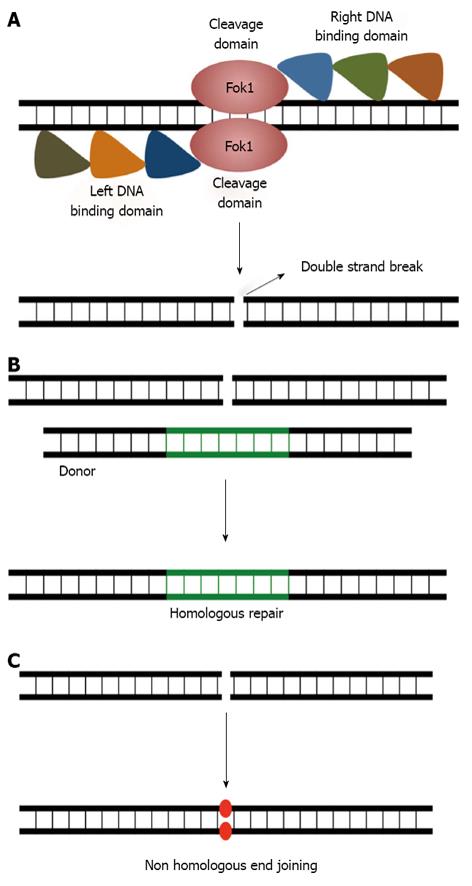Copyright
©2013 Baishideng Publishing Group Co.
World J Stem Cells. Oct 26, 2013; 5(4): 98-105
Published online Oct 26, 2013. doi: 10.4252/wjsc.v5.i4.98
Published online Oct 26, 2013. doi: 10.4252/wjsc.v5.i4.98
Figure 4 Gene editing using Zinc finger nucleases.
A: Schematic showing a zinc finger nuclease (ZFN) dimer bound to its target locus to introduce a site-specific double-stranded break (DSB) in the chromosome, each ZFN monomer consists of three to six zinc finger domains fused to the DNA-cleavage domain of the FokI endonuclease. B: The DNA DSB can be repaired via either the homologous recombination (HR), or C: the non-homologous end-joining pathway. HR requires a homologous DNA template to accurately repair DSBs in the chromosome, and ensures high fidelity DNA repair. In contrast, non-homologous end joining does not rely on sequence homology between the DNA ends for ligation and can be error-prone.
- Citation: Ramamoorthi K, Curtis D, Asuri P. Advances in homology directed genetic engineering of human pluripotent and adult stem cells. World J Stem Cells 2013; 5(4): 98-105
- URL: https://www.wjgnet.com/1948-0210/full/v5/i4/98.htm
- DOI: https://dx.doi.org/10.4252/wjsc.v5.i4.98









